Abstract
A small cluster of dysenteric illness, due to Shigella flexneri, was identified among technical assistants of a primate research unit. All of the affected individuals had been in regular contact with a colony of cynomolgus macaque monkeys, one of which was known to have suffered from acute haemorrhagic colitis in the preceding few weeks. Four monkeys were found to be excreting S. flexneri bacilli of identical antigen type (1b) to that isolated from the human cases. Investigation of working practices revealed the potential for inadvertent faeco-oral spread and the need to improve existing control methods. We conclude that this small outbreak of shigellosis represents a primate-associated occupational zoonosis. The risk may not be fully appreciated by handlers or their doctors.
Full text
PDF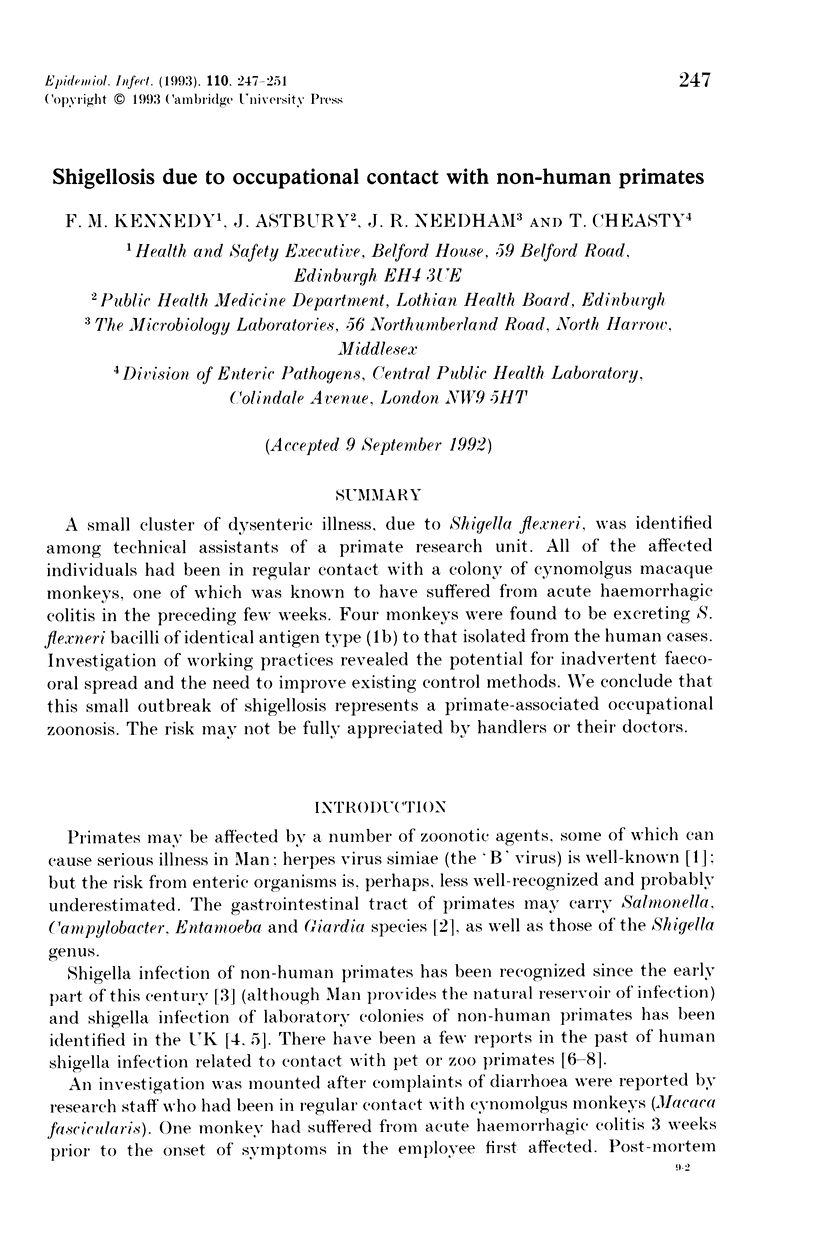
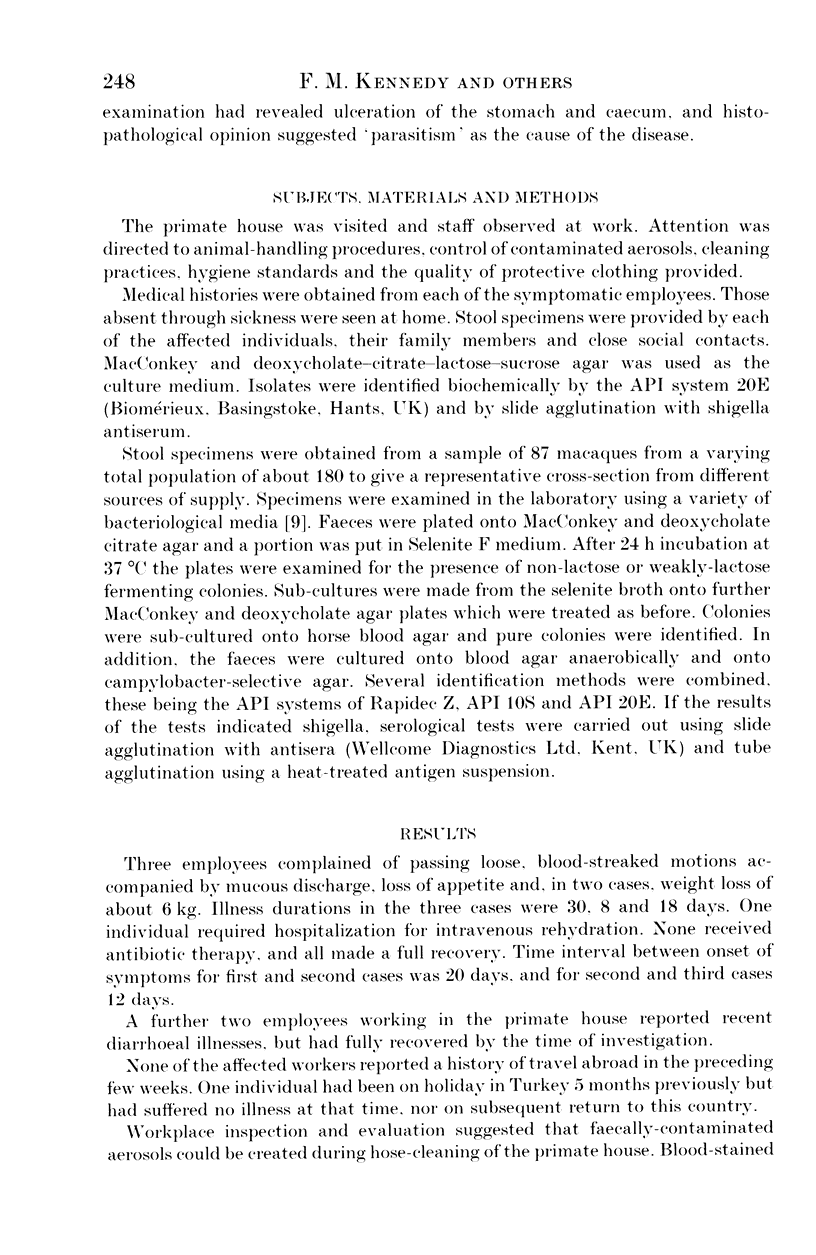
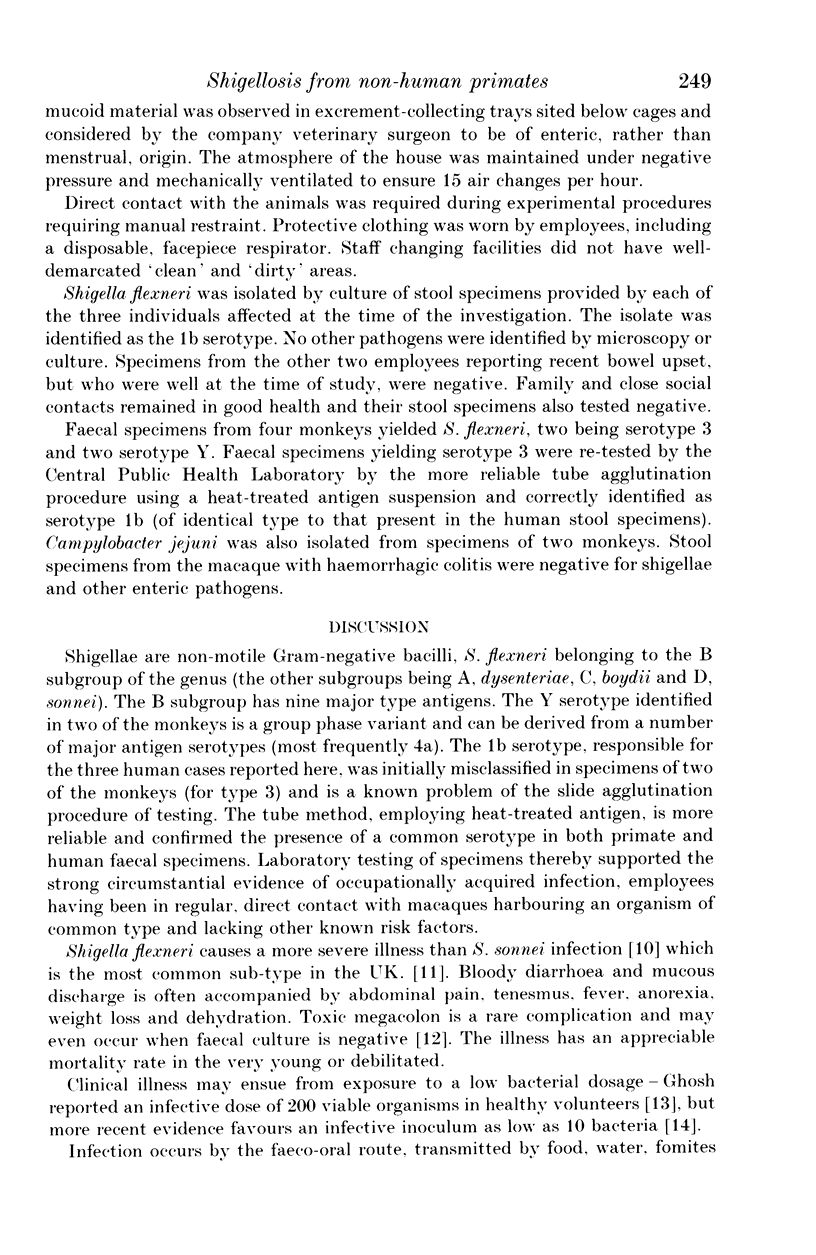
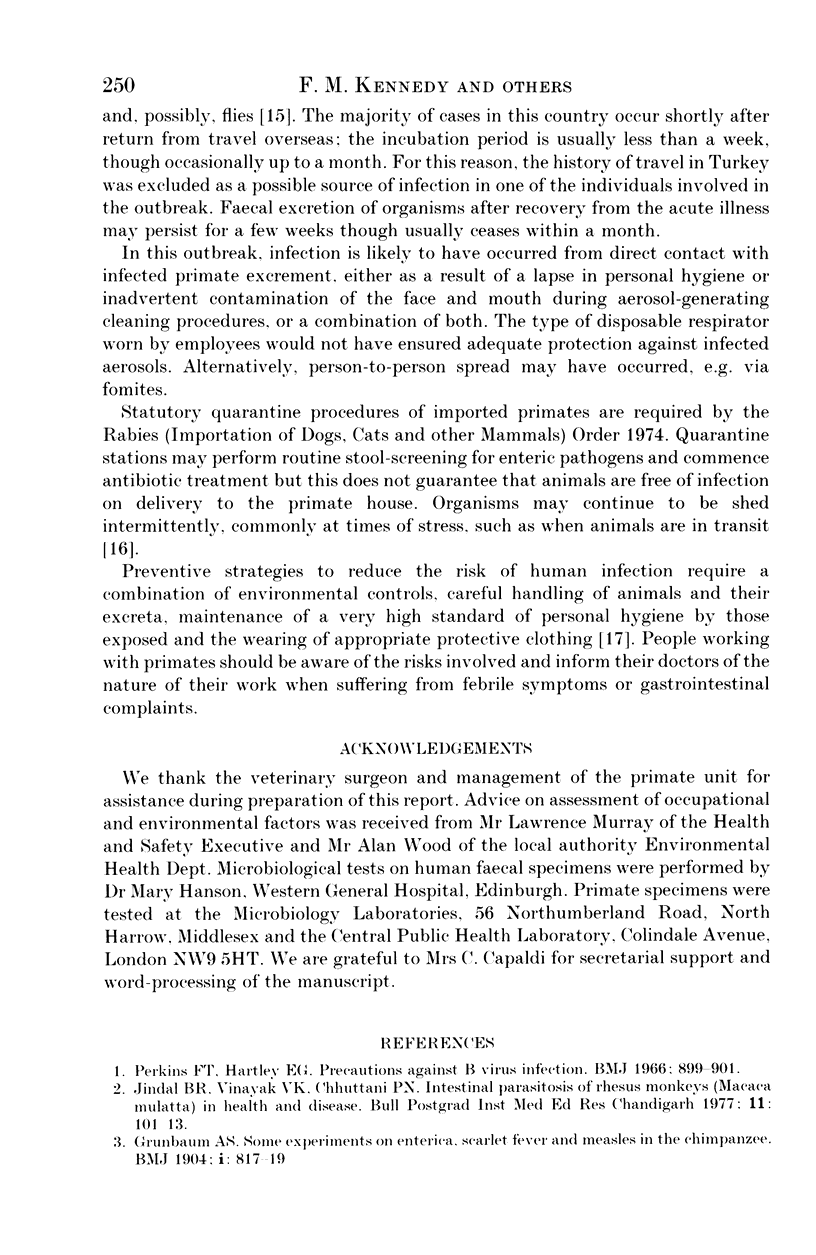
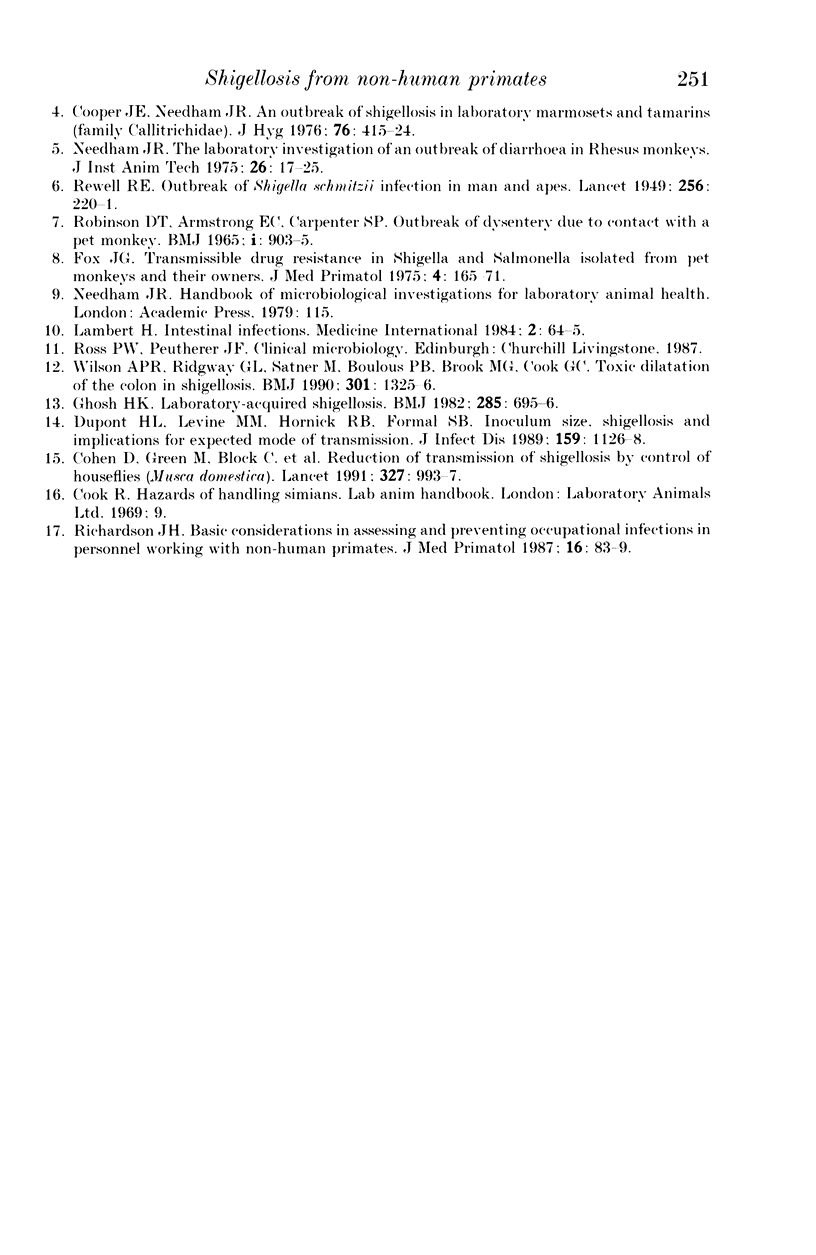
Selected References
These references are in PubMed. This may not be the complete list of references from this article.
- Cohen D., Green M., Block C., Slepon R., Ambar R., Wasserman S. S., Levine M. M. Reduction of transmission of shigellosis by control of houseflies (Musca domestica) Lancet. 1991 Apr 27;337(8748):993–997. doi: 10.1016/0140-6736(91)92657-n. [DOI] [PubMed] [Google Scholar]
- Cooper J. E., Needham J. R. An outbreak of shigellosis in laboratory marmosets and tamarins (Family: Callithricidae). J Hyg (Lond) 1976 Jun;76(3):415–424. doi: 10.1017/s0022172400055340. [DOI] [PMC free article] [PubMed] [Google Scholar]
- DuPont H. L., Levine M. M., Hornick R. B., Formal S. B. Inoculum size in shigellosis and implications for expected mode of transmission. J Infect Dis. 1989 Jun;159(6):1126–1128. doi: 10.1093/infdis/159.6.1126. [DOI] [PubMed] [Google Scholar]
- Fox J. G. Transmissible drug resistance in Shigella and Salmonella isolated from pet monkeys and their owners. J Med Primatol. 1975;4(3):165–171. doi: 10.1159/000459850. [DOI] [PubMed] [Google Scholar]
- ROBINSON D. T., ARMSTRONG E. C., CARPENTER K. P. OUTBREAK OF DYSENTERY DUE TO CONTACT WITH A PET MONKEY. Br Med J. 1965 Apr 3;1(5439):903–905. doi: 10.1136/bmj.1.5439.903. [DOI] [PMC free article] [PubMed] [Google Scholar]


